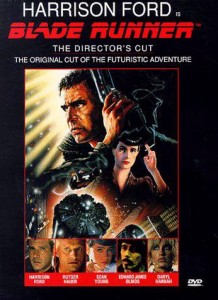This profile was published without title in the December 1983 issue of Omni, in a section simply called “The Arts”. -– J.R.

It makes perfect sense that Manuel De Landa, a thirty-year-old Mexican anarchist filmmaker who specializes in the aesthetics of outrage, inhabits a midtown Manhattan apartment so tidy and upstanding that it could almost belong to a divinity student. The point seems to be that if you want to shake the civilized world at its foundations, it helps your credibility if you wear a jacket and tie — especially if you speak with an accent that makes you sound like Father Guido Sarducci. For a talented artist who has an asocial image to sell and a highly social way of putting it across, it isn’t surprising that De Landa makes wild, aggressive films that leap all over the place while standing absolutely still. In The Itch Scratch Itch Cycle (1977) and Incontinence: A Diarrhetic Flow of Mismatches (1978),quarreling couples in tacky settings are subjected to all kinds of optical violence:The camera moves around them in the shape of a figure eight, or De Landa crazily cuts back and forth between two static shots of the principals screaming at each other — as if he were a mad scientist, controlling their shrieks with the twist of a knob. Read more
Published by Chicago’s a cappella press in 2000. The jacket reproduced below, which I prefer, belongs to the English edition published by Wallflower Press in 2002; the full title is Movie Wars: How Hollywood and the Media Limit What Films We Can See. — J.R.

To refer to a producer’s oeuvre is, at least to me, as ignorant as to refer to the oeuvre of a stockbroker.
— David Mamet

There are a lot of complaints these days about the declining quality of movie fare, and the worsening taste of the public is typically asked to shoulder a good part of the blame.
Other causes are cited as well. The collapse of the old studio system meant the loss of studio heads who lent their distinctive stamp to each of their pictures — often vulgar and overblown, to be sure, but also personal and engaged — to be replaced largely by cost accountants and corporate executives with little flair, imagination, or passion. The exponential growth of video has made home viewing more popular than theatrical moviegoing and has therefore helped to diminish everyone’s sense of what a movie is, so that the size and definition of the image, a clear sense of its borders, the quality and direction of light, and the notions of film as community event, theatrical experience, or “something special,” have all suffered terrible losses. Read more
From Slate (posted June 23, 2009). — J.R.

One of the key paradoxes of contemporary movie culture is that some film lovers claim that cinema is dying, others maintain that it’s entering a renaissance, and both factions are right. It all depends on whose movie culture you’re talking about.
The problem is how elastic and imprecise our terminology has become. Nowadays, when somebody says, “I’ve just seen a movie,” we don’t necessarily know whether the speaker saw it in a theater or on a mobile phone, alone or with a thousand other people, on celluloid or on a disc. These aren’t really the same experiences, even if we choose to call them all The Godfather or Up. And when it comes to distinguishing between film history and advertising, we may be even more confused.
One reason why we may be entering a renaissance in film viewing is that we no longer have to go to Paris or New York in order to learn anything comprehensive about the history of the medium as an art form. We can, in fact, live almost anywhere, at least if we own a multiregional DVD player — and nowadays one can acquire one of these for less than $50. Read more




